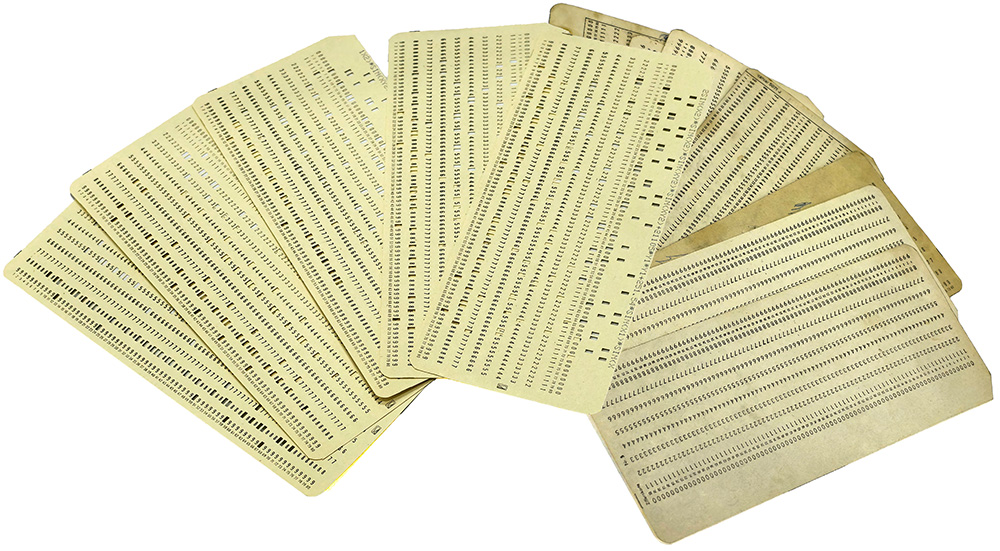FORTRAN cards for IBM 1130, produced by IBM in the early 1960s, were punched cards used for programming and data entry. The IBM 1130, a popular minicomputer, utilized these cards for inputting programs written in FORTRAN, one of the first high-level programming languages. Programmers wrote their code on punched cards, with each card representing one line of code, which was then loaded into the IBM 1130 for processing. This programming method was widely used in academic, scientific, and business environments throughout the 1960s and 1970s. For example, it was used to solve systems of differential equations using the Runge-Kutta method, with results then printed on continuous listings of multiple pages. The significance of FORTRAN cards lies in their crucial role in the early stages of computer programming development. They represented one of the first steps toward more accessible computing, enabling the development of complex software in an era dominated by machine language and punched cards, laying the foundation for modern programming techniques.
Creator: IBM, 1973-1974
Source: Gift of Katica Hedrih
Text prepared by Katica Hedrih
Photo by Dragan Aćimović
